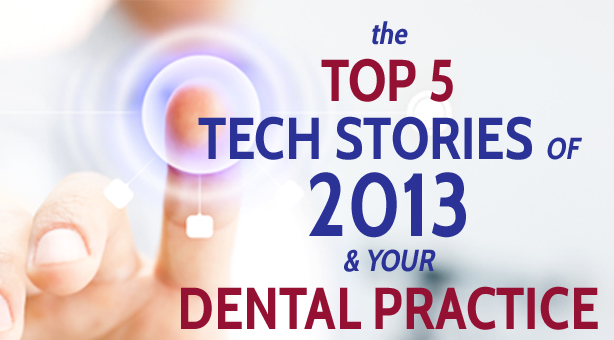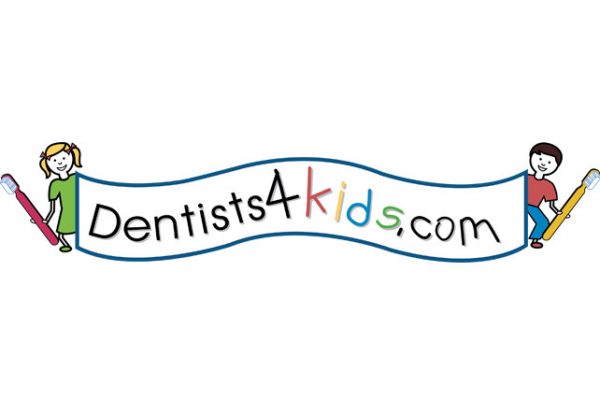
2013 has been the year of tech competition between brands looking to climb to the top of consumer wish-lists (or stay there). From social IPO’s to smartphone companies, the industry continues to grow and our lives become ever more tied to technology. The continued integration of the internet into everyday life means that dental practices must constantly evaluate how they market to new and existing patients. Here is our list of the top 5 tech stories of 2013 and how they affect your dental practice:

1. Facebook & Twitter went public.
Facebook’s IPO may have gotten off to a rocky start, but investors have held on as Facebook continues to look for new streams of revenue. A focus on investor profits for Facebook and Twitter has meant that both social networks have been pushing harder for paid advertising. The bottom line is that if businesses want to get maximum exposure for their content they are being asked to pay for it.
What this means for dentists: Quality, engaging content is more important than ever. And because you’re less likely to show up in the organically in the newsfeed, you’re also going to need to spend more time encouraging current patients to follow you on Facebook & Twitter. If you build a social media presence they will come? Not likely. You need to actively tell people where to find you first.

2. Google released “Hummingbird”.
“Hummingbird” is the nick-name for Google’s newest update to their search algorithm. Looking at over 250 secret factors, it determines where your website shows up in search. Google has said that Hummingbird favors websites that provide relevant results for recent trends in search, namely semantic and “long-tail” search queries. More info on what that means can be found on a recent two-part blog post we wrote on the topic.
What it means for dentists: Don’t have a website optimized for mobile devices? You need one. Technology like Apple’s Siri means that people are speaking directly to their phones while seeking answers to dental issues on the go. Connecting your website to a blog provides even more value, as you build a virtual library to help people find the answers they are searching for.

3. Edward Snowden exposed NSA spying.
He’s been called a “hero” and a “traitor”, but regardless of your views on Edward Snowden, his disclosure of over 200,000 classified NSA documents has created a new conversation about online privacy. From what we search for on the web to what we’re posting on social media, no one is quite sure who has access to our information.
What it means for dentists: The fine line between fostering online community and abiding by HIPAA standards means that dentists need to stay on top of current guidelines. Never post patient pictures or other information without patient permission and be aware of what should and should not be sent through unsecured email. More information on recent changes to HIPAA can be found on the ADA’s website.

4. Snapchat turned down $3 Billion from Facebook.
Snapchat is a mobile app that allows users to privately message one or more people in their closed network, sending photo or video messages that disappear after a specific time that is set by the sender. It’s a social network, but it’s closed, more private and doesn’t leave the permanent online footprint that other social utilities do. Its growing popularity, especially among younger users, motivated Facebook to offer $3 billion to purchase the small company (run by a 24 year old). And the offer was refused.
What this means for dentists: The popularity of Snapchat once again shows a move towards users who desire privacy in their social interactions. Dentists are going to need to be creative in reaching a new generation that is spending less time on more open social media sites like Facebook. Practices that stay competitive will invest more in mobile websites and spend more time on photos and video in their marketing strategy.

4. Tech became wearable.
Samsung’s release of Galaxy Gear, a smartwatch that connects to Samsung phones, represents the first major entry into what is certain to be the race for internet connected wearables. This is significant because it shows a move towards the internet as not something we go to, but something that simply is. Being connected online has transitioned from a periodic activity to “always on”.
What this means for dentists: Having your dental practice listed in maps, directories and business listings is essential. You will want to make sure that when people are searching for you (especially on a mobile device) that they can find up to date and accurate information. Our recent blog post on local search gives some basics to get you started.

5. Google+ pushed integration.
2013 saw Google continue to dominate the internet, and nowhere was this more apparent than in the push to integrate Google+ into nearly every service that Google provides. Gmail users were prompted to “upgrade” their accounts to Google+, Blogger is now part of the Google+ network, and the behemoth video site YouTube now requires a Google+ account to even comment on a video there.
What this means for dentists: You can’t ignore Google+ any more. With 70% of brands having a presence there, and 343 million active users, having a Google+ page is as essential as Facebook.
Internet marketing involves continually looking at the online behavior of your target audience and reaching people where they are. Unfortunately, dental practices can’t be content to simply choose a static medium and never change their marketing methods. Communicating your message to current and prospective patients is more challenging than ever. How is your practice focused on reaching new patients? Leave us a comment below!





1 Comment. Leave new
Hello there, I hopped over to your website via Pinterest. Not a thing I customarily read through, yet I enjoy your opinions none the less. Thank you very much for creating some thing worthy of reading through!